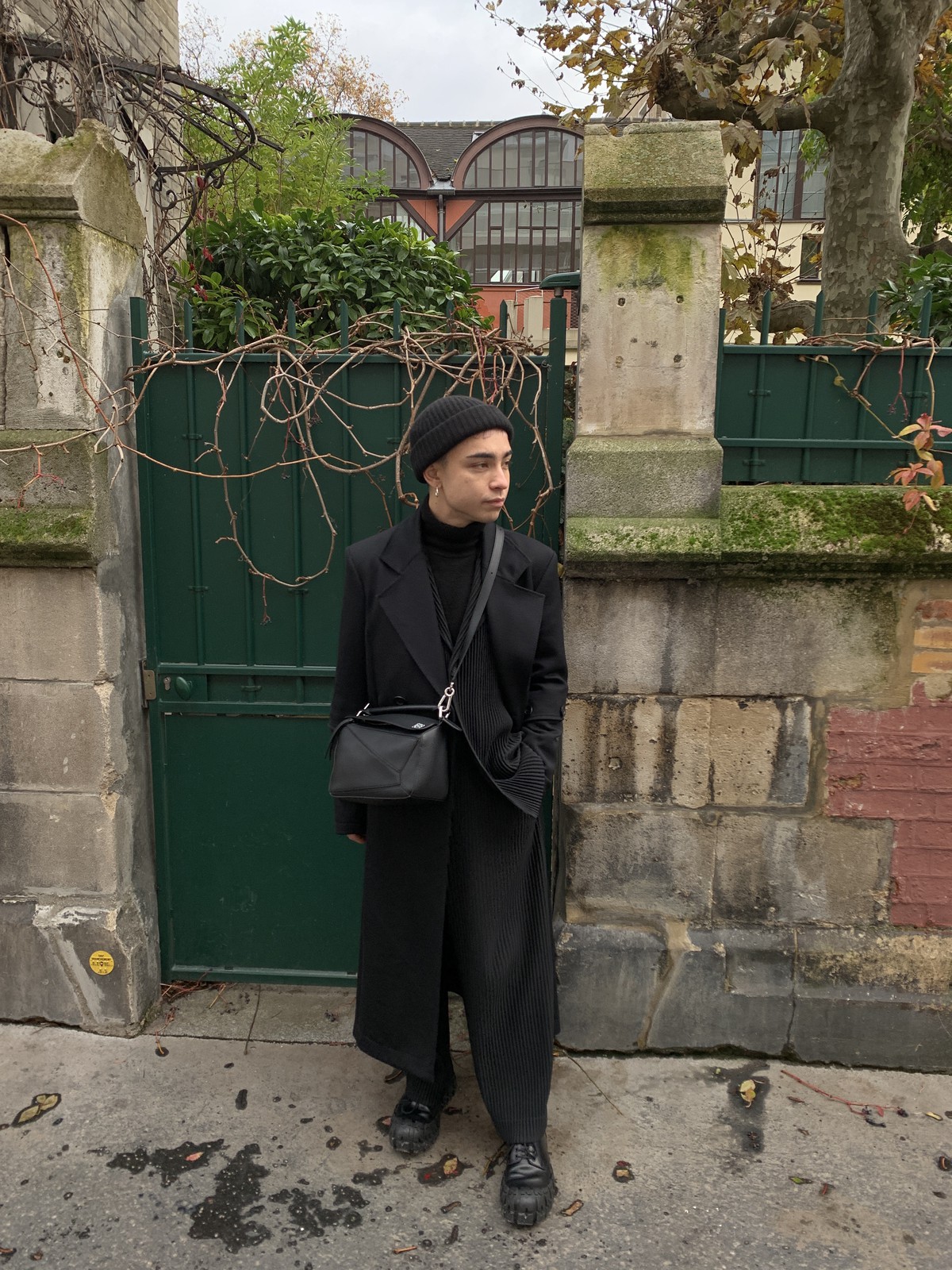VOLUME 1 / ARTICLE 1 ︎
CRE-ASIAN
A Balance Of What You Make And The Culture That Made You
Written by Philip Mak
January 2020
January 2020

In one of Crazy Rich Asians’ foundational scenes, Rachel, the film’s Chinese-American protagonist, meets Eleanor, the intimidatingly wealthy mother of her Singaporean boyfriend. They awkwardly connect —or clash— in the kitchen of the latter’s sprawling estate. The setting was hardly coincidental; in most Asian households, traditions are kept alive by recipes, cooking techniques and culinary knowledge dutifully passed on to the next generation.
Upon discovering her diaspora-raised potential daughter-in-law pursued her personal interests to become an economics professor, Eleanor cuttingly remarks that following one’s passions is very American. By her estimation, Old-World Chinese children would make career decisions based on their families’ needs. In short, she was calling Rachel a bad Asian.
Those values are not exclusive to the old country, at least not in my experience.
As the Canadian son of a Hong Kong-born Chinese mother, I have felt the guilt, second-guessing and shame associated with pursuing a creative career. My mum is an accountant and her brother is a civil engineer — appropriately professional jobs. Not having a mind for maths or sciences, I fell into writing.
My journey was hardly linear; I initially pursued a degree in psychology — a soft science pathway to become a doctor of sorts. My Po-Po (Cantonese for ‘grandmother’) could brag to her friends that I was becoming a yee-saung (‘physician’). In Chinese culture, face often supersedes facts.
I realized halfway through my psychology degree that I was miserable and could not keep it up for a master’s and doctorate. (Sorry, Po-Po.) However, through my electives, I saw that my natural knack for wit and wordplay translated well into a career in writing and marketing.
Looking back, my passions had always orbited fashion and writing — but these were never nurtured within me. Being primarily raised by my Chinese family, the question was always, “Where’s the money in that?” or “Boys don’t do that kind of work!” Instead, value was placed in viability across earnings and status.
I think it’s important to note that I can only speak to my experience, and that there are plenty of Chinese and Asian families that are very supportive of their children’s creative careers. However, I do think this pipeline into more professional jobs not only comes from Eastern values, but also Western stereotypes of what our people are supposed to be like — specifically, STEM-oriented and straight-A studious.
Many stereotypes are based in the model minority theory, which reinforces notions that Asian communities in the West have higher levels of socioeconomic success — whether that be a greater degree of education, financial achievement, marital and familial stability, or low crime rates. These qualities are often used by White culture and the media as a juxtaposition against other minorities.
It’s not an unfounded claim; a 2014 study by sociologists Min Zhou and Jennifer Lee found that Chinese immigrants tend to not only be more educated than their American neighbours, but also the countrymen they left behind.
Generally speaking, Asian immigrant parents will push their progenies into more conservative professional careers as the pathway to success is more black and white than in the arts. Education was also often the only way to achieve economic and social mobility in the old country.
While being a doctor or accountant is not inherently a negative, what happens to those who do not fit this narrow definition of success? Often they feel alienated from their ethnicity and culture — that, somehow, they are “not Asian enough.” Fortunately, things are changing.
Upon discovering her diaspora-raised potential daughter-in-law pursued her personal interests to become an economics professor, Eleanor cuttingly remarks that following one’s passions is very American. By her estimation, Old-World Chinese children would make career decisions based on their families’ needs. In short, she was calling Rachel a bad Asian.
Those values are not exclusive to the old country, at least not in my experience.
NEW WORLD, OLD VALUES
As the Canadian son of a Hong Kong-born Chinese mother, I have felt the guilt, second-guessing and shame associated with pursuing a creative career. My mum is an accountant and her brother is a civil engineer — appropriately professional jobs. Not having a mind for maths or sciences, I fell into writing.
My journey was hardly linear; I initially pursued a degree in psychology — a soft science pathway to become a doctor of sorts. My Po-Po (Cantonese for ‘grandmother’) could brag to her friends that I was becoming a yee-saung (‘physician’). In Chinese culture, face often supersedes facts.
I realized halfway through my psychology degree that I was miserable and could not keep it up for a master’s and doctorate. (Sorry, Po-Po.) However, through my electives, I saw that my natural knack for wit and wordplay translated well into a career in writing and marketing.
Looking back, my passions had always orbited fashion and writing — but these were never nurtured within me. Being primarily raised by my Chinese family, the question was always, “Where’s the money in that?” or “Boys don’t do that kind of work!” Instead, value was placed in viability across earnings and status.
I think it’s important to note that I can only speak to my experience, and that there are plenty of Chinese and Asian families that are very supportive of their children’s creative careers. However, I do think this pipeline into more professional jobs not only comes from Eastern values, but also Western stereotypes of what our people are supposed to be like — specifically, STEM-oriented and straight-A studious.
THE MESS OF MODEL MINORITY
Many stereotypes are based in the model minority theory, which reinforces notions that Asian communities in the West have higher levels of socioeconomic success — whether that be a greater degree of education, financial achievement, marital and familial stability, or low crime rates. These qualities are often used by White culture and the media as a juxtaposition against other minorities.
It’s not an unfounded claim; a 2014 study by sociologists Min Zhou and Jennifer Lee found that Chinese immigrants tend to not only be more educated than their American neighbours, but also the countrymen they left behind.
Generally speaking, Asian immigrant parents will push their progenies into more conservative professional careers as the pathway to success is more black and white than in the arts. Education was also often the only way to achieve economic and social mobility in the old country.
While being a doctor or accountant is not inherently a negative, what happens to those who do not fit this narrow definition of success? Often they feel alienated from their ethnicity and culture — that, somehow, they are “not Asian enough.” Fortunately, things are changing.

|
At the time of writing, 2020 has just begun. It feels almost surreal to recall that 20 years ago, the planet was abuzz with two very different kinds of anticipation: the excitement for the dawn of a new Millennium and the fear of Y2K tearing through computer systems, dropping planes from the sky and firing airborne nuclear missiles in their place. How the world has changed — though not in the ways they expected.
No Boeings or bombs fell that night. I was nine years old in 2000 and have seen the zeitgeist shift cosmically in the subsequent two decades. I remember Po-Po bringing home a special edition of the newspaper on the day of 9/11, spectating the wars in Afghanistan and Iraq from the safety of the West and the collapse of the global economy in 2008, the year I went to university.
It wasn’t all bad. The United States elected its first black president, Barack Obama, and the world has seen unprecedented advancements in equality across women’s and LGBTQ+ rights, and diversity and inclusivity in the media — even in the face of rising alt-right movements. This was largely thanks to massive demographic shifts following the 2008 crash, the internet and social media, as well as more women and POC pursuing post-secondary education.
In short, the world is becoming a better place for those who are different.
|
Representation has been one of the most significant advancements for Asian people, whether it be in the media, in the arts, in politics — in general. One need look no further than Henry Golding starring in films like Last Christmas and The Gentlemen. His Crazy Rich Asians costar Awkwafina also just became the first Asian-American woman to win the Golden Globe for Best Actress in a Musical or Comedy for her performance in The Farewell.
Awkwafina’s character in the film is a struggling New York City artist with parents who passive aggressively express their disapproval of her career path. Her North American values of openness and freedom directly clash with her family’s Eastern traditions when they find out her grandmother is dying and choose not to tell her. If you are also the child of an Asian immigrant, this conflict is doubtlessly something you can relate to.
What makes all of the aforementioned films significant however is not only their content, but the fact that they show Asians in prominent roles outside of STEM jobs (think: token scientists) or martial arts. A lack of representation is like a dull ache that you become accustomed to living with — the sort that flares up and becomes momentarily unbearable sometimes, but generally is just an uncomfortable facet of every day.
As a young Asian creative, seeing myself represented on screens —whether it be Lucy Liu in Charlie’s Angels or animated Vietnamese-American writer Diane Nguyen in BoJack Horseman— became like a temporary relief. You never know how much it hurts until it’s gone.
Asian representation in Western media has innumerable benefits: it validates us as worthy of celebrity and admiration (without exoticizing our appearances for beauty), it often showcases us working a variety of jobs and it tells the next generation they too can be actors — or whatever they want to be. While many argue that these are more vanity than valuable in terms of improving lives, I personally believe the rewards are less immediate.
I think it will be seen in the next generation’s art. It will read in their words. It will be heard in their songs. It will be like Asians are creative just like everybody else — because we are.
ABOUT THE AUTHOR
Philip Mak is a Canada-raised, London-based copywriter and journalist who enjoys fashion, travel, and searching for the world’s best har gau in his spare time.








